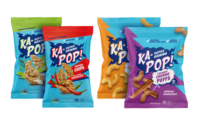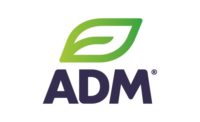Snack Food & Wholesale Bakery was recently able to talk to Christine Cochran, executive director, Grain Foods Foundation, Washington, D.C., about the current COVID-19 pandemic and what it means for the snack and bakery industry.
Manufacturing
Liz Parker: When will demand be met?
Christine Cochran: At the beginning of the pandemic, roughly a month ago, media coverage and social media feeds focused on empty grocery store shelves, including those with no bread and no flour, and this was understandably panic-inducing—especially, for a mom like me whose five-person family goes through five loaves of bread per week.
However, we know demand is being met and will continue to be met because millers, bakers, and transporters across the country are doing what they do best.
Mills and baking facilities are up and running, with management teams securing supply chains so that the lack of a single ingredient does not halt production. Recognizing their workforce may be reduced as the infection expands, they are working to not only safeguard the healthfulness of their current workforce and facilities but are also preparing to expand their workforces to ensure they have reliable, healthy, and trained team members. They are retooling their production to ensure product offerings match consumer demand, and they are working to ensure delivery of fresh bread is done in a safe and timely way. Finally, companies are also doing an incredible job of managing a complicated, ever-changing web of federal, state, and local rules and regulations as the crisis continues to unfold.
With all of this buzzing in the background, millers, bakers, and transporters are demonstrating that they are indeed “essential” workers by delivering the delicious, fresh products that Americans are demanding as quickly and efficiently as possible.
When we think about demand, we have seen a dramatic change in Americans’ willingness to purchase flour or bread for household consumption during the crisis. However, USDA data shows and the industry reports a steady decline in per capita consumption of wheat flour and fresh bread since 2000 and 2007, respectively. What underlying reasons explain the current demand shift? Perhaps in part because roughly 30 percent of Americans claim bread is not only seen as comforting in times of stress but also healthy and nutritious (unlike most “comfort foods”) (Grain Foods Foundation Omnibus Survey Research Report, April 2020). It will be interesting to see if the shift in demand that we are experiencing now is just a momentary, short-term change or one that persist as consumers fall in love—or back in love—with the affordability, convenience, and nutrition of bread.
LP: Is quality being sacrificed for speed?
CC: Never. Every baker I have spoken with started proactively planning and working to secure their supply chains well in advance of the demand shift, guaranteeing that food quality and safety would not be compromised. Moreover, we have seen at least two major companies, Flowers Foods and The Kroger Company, award appreciation bonuses to their workers and independent contractors for their commitment to keeping operations running.
LP: What hygiene/sanitation protocols are in place at manufacturing plants & bakeries?
CC: For starters, the USDA is continuing to uphold its strict standards of safe food production, including all breadbasket products, through inspections by Animal and Plant Health Inspection Service (APHIS) and Federal Grain Inspection Service (FGIS).
While many of them are already seen as “best in class” among all food producers, manufacturing plants and bakeries are continuing to follow and enforce all CDC guidance related to hygiene and sanitation.
In response to the pandemic some steps we are seeing facilities adopt include enhanced daily sanitation and cleaning of commonly used areas and frequently touched surfaces by crews wearing full personal protective equipment; social distancing and personal protective equipment measures for workers; required self-quarantining for those having close contact with a confirmed case or otherwise exhibiting symptoms of COVID-19; and in many cases daily temperature screenings for everyone entering the facility.
LP: What happens if a bakery employee tests positive for coronavirus?
CC: Some facilities, for example a King’s Hawaiian plant in Georgia and a Bimbo Bakeries plant in Pennsylvania, have been able to remain open following an employee’s positive test for coronavirus by sanitizing the entire facility and directing the individual(s) and anyone in close contact to self-quarantine for two weeks.
We have also seen at least one facility, a Flowers Foods plant in Georgia, temporarily close following an increase in both the number of confirmed COVID-19 cases and the number of employees self-quarantining, but it’s worth mentioning they were able to shift all production to nearby facilities so demand would not be sacrificed.
Whether choosing to remain operational or closing temporarily, many facilities have created dedicated COVID-19 Response Teams committed to doing all they can to both ensure the health and safety of their workforce and produce their much-needed products.
Supply Chain
LP: What’s going to happen as these stay-at-home measures continue later into the spring/summer?
CC: However long current stay-at-home measure continue, America’s bread supply should not be affected. Wheat growers have produced a bumper crop, and millers and bakers have already demonstrated they have the capacity to produce all of the flour and breadbasket products our country needs.
The primary vulnerability for the milling and baking industry, which is the same vulnerability shared by all essential businesses, is workforce. Milling and baking companies have been proactively protecting themselves from this vulnerability for weeks by hiring and training additional workers who will be prepared if and when current employees are diagnosed with coronavirus or are in contact with someone who has been and must miss work for a period of time.
As someone who’s been part of the commodity grain industry for over 15 years, it’s been very powerful to see so many members of the supply chain do anything and everything they can to provide Americans with what they are demanding now and will continue to demand as this crisis continues to unfold.
Shopping concerns
LP: How long can the virus live on bread packaging?
CC: According the U.S. Food and Drug Administration, there is no evidence of food or food packaging being associated with COVID-19 transmission. With this in mind, it’s important for consumers to know that there is no need to wipe down any food packaging. However, if doing so makes them feel better, it’s crucial that they not let the wipe or cleaner come in contact with food directly. This not only goes for packaged foods within the breadbasket but also for produce, which should only be washed with clean water to prevent sickness from residual detergents or chemicals.
LP: Are there different considerations/precautions in buying bread from in-store bakery vs. packaged bread?
CC: All commercially produced food is subject to safety standards whether it is local, state or federal. Given this, there is no reason one should be safer than the other.





